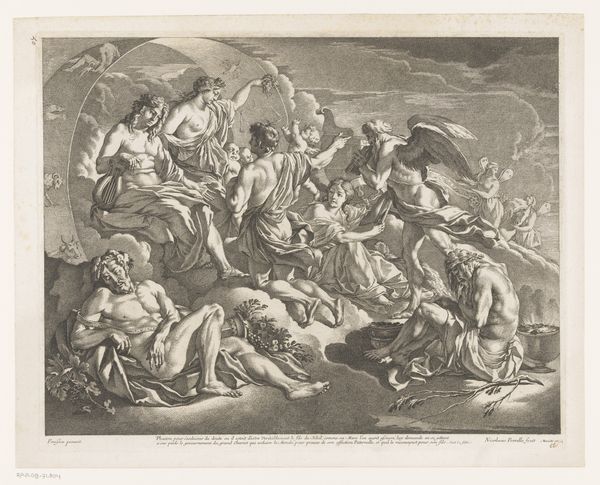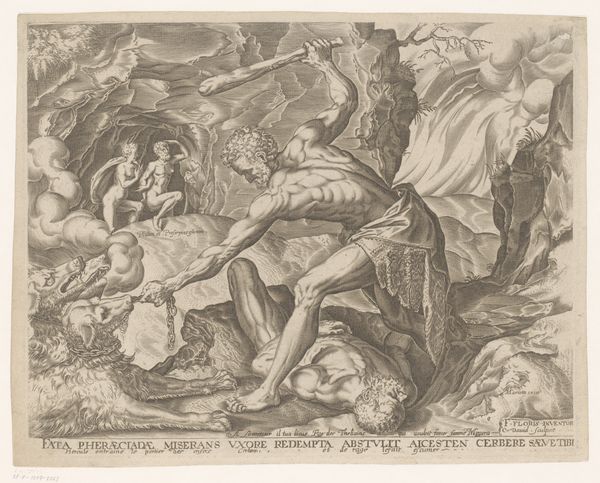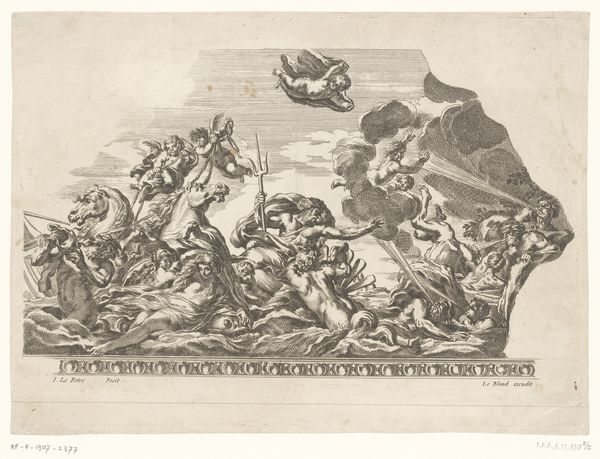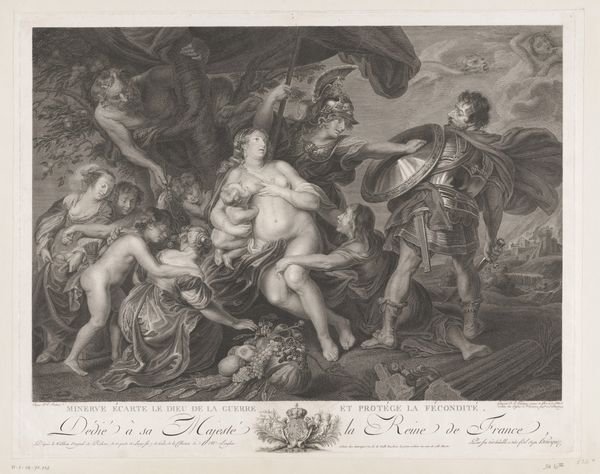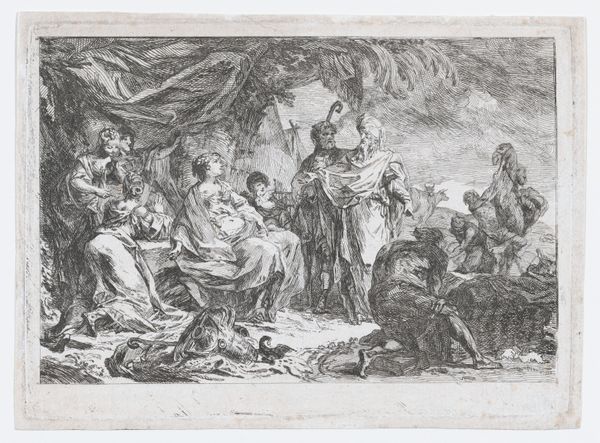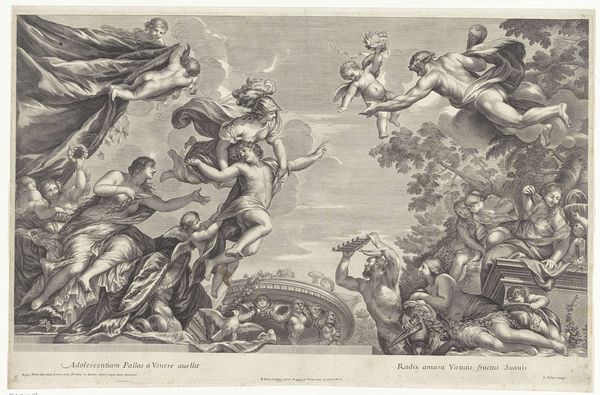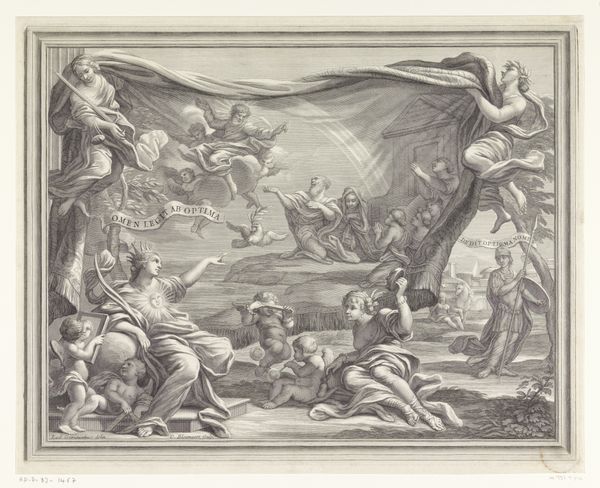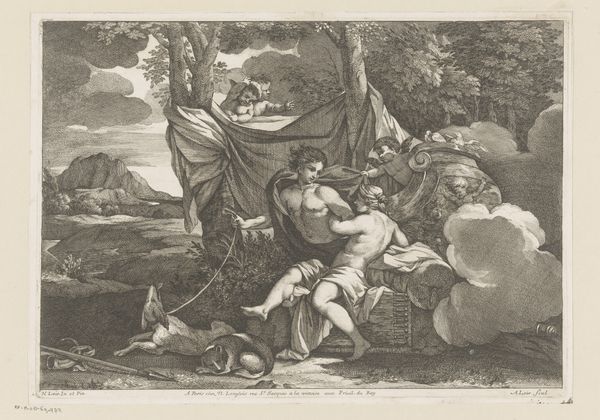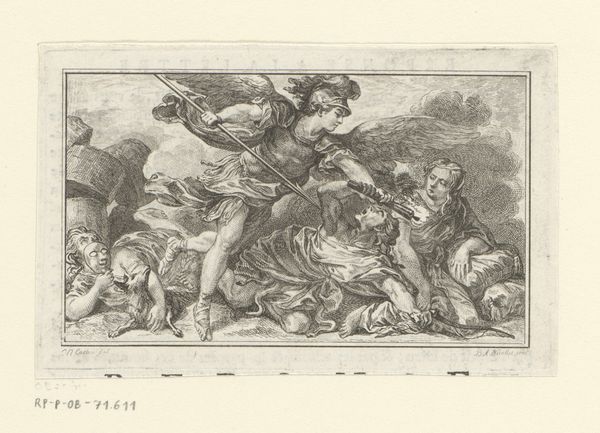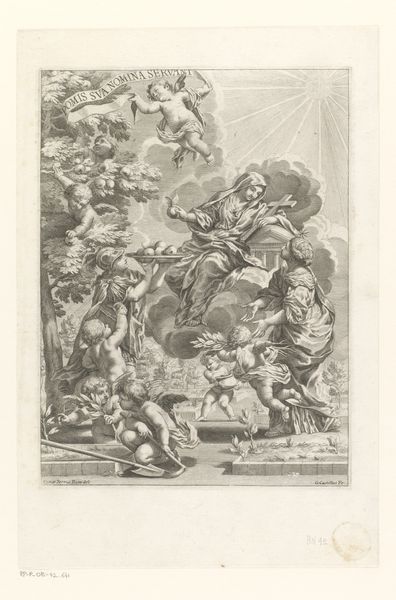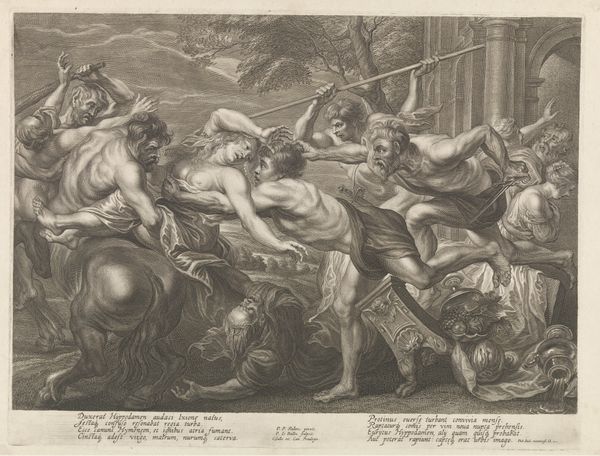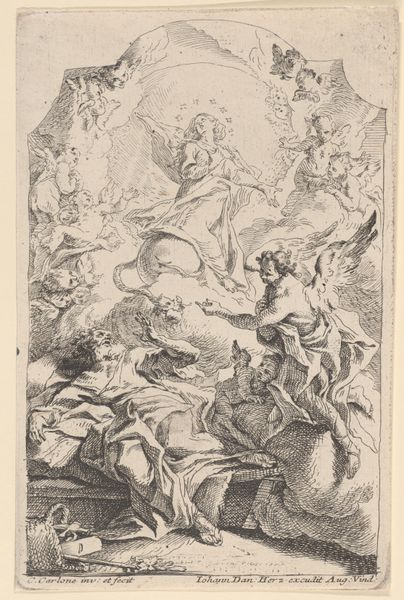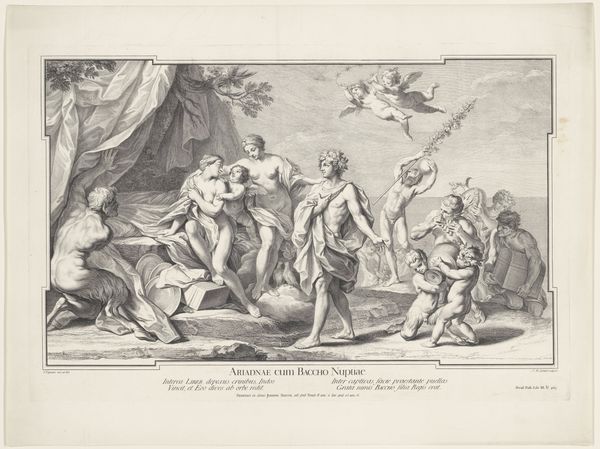
Allegorische voorstelling met Minerva, Schilderkunst, Beeldhouwkunst en Tijd 1650 - 1713
0:00
0:00
alexisloir
Rijksmuseum
engraving
#
portrait
#
allegory
#
baroque
#
figuration
#
line
#
history-painting
#
engraving
Dimensions: height 284 mm, width 377 mm
Copyright: Rijks Museum: Open Domain
Editor: Here we have Alexis Loir’s “Allegorical Representation with Minerva, Painting, Sculpture, and Time,” created between 1650 and 1713. It’s an engraving currently residing at the Rijksmuseum. There’s so much going on - allegorical figures, clouds, a cityscape in the distance! It all seems very staged. How do you interpret this work in the context of its time? Curator: It's crucial to understand that prints like these played a key role in disseminating ideas and promoting specific political agendas, especially during the Baroque era. Minerva, the goddess of wisdom and warfare, often represented enlightened rule and patronage of the arts. Given the allegorical nature of the scene and the title, it looks like Loir is promoting the importance of both artistic traditions, and of Minerva and 'Time' as protectors of them. Editor: So it’s making a statement about who and what is valuable to society? How explicit would this have been to contemporary viewers? Curator: Very explicit! The print's patron—likely a noble or member of the court—would’ve understood the visual language immediately. These images reinforced existing social hierarchies and the importance of classical learning and artistic skill, almost like propaganda. How do you think this image reflects the relationship between power and artistic production? Editor: I see that. It almost feels like the artists—painting and sculpture themselves—are being offered up or approved by these higher powers. Does this kind of direct patronage affect what kind of art gets produced? Curator: Absolutely! Artistic choices were often shaped by the tastes and expectations of patrons. While it can result in great works of art, it could also limit artistic freedom and enforce prevailing social norms. Reflecting on this, do you think art of this era challenged or reinforced societal power structures? Editor: I’d say it mostly reinforces them, although perhaps in subtle ways, it invited reflection. I now understand that this isn’t just a pretty picture, it’s a political and social statement embedded in visual allegory.
Comments
No comments
Be the first to comment and join the conversation on the ultimate creative platform.
